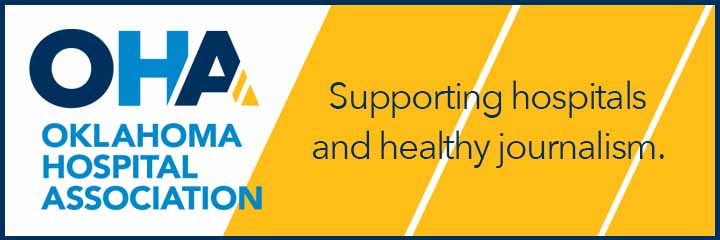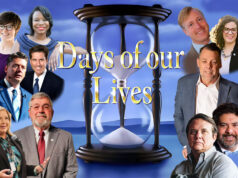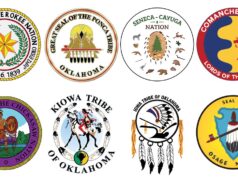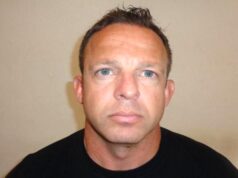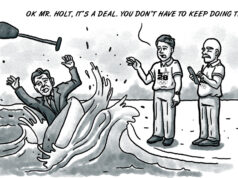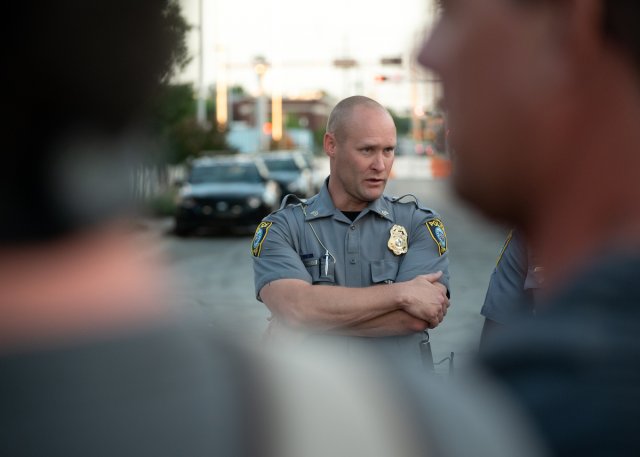
On Aug. 11, approximately 40 leaders and representatives from various corners of the Oklahoma City community gathered in a giant, socially distanced circle in the Cox Convention Center for the first meeting of the mayor’s Law Enforcement Task Force.
One of the group’s tasks is to revisit the police department’s “long-standing but little-known” Citizens Advisory Board, as Mayor David Holt called it in a Twitter statement June 2. At the time, the wave of protests of police violence that followed the killing of George Floyd had reached Oklahoma City, and Holt had spent most of that Tuesday in a City Council meeting that featured several hours of citizen comments, many of which called for community oversight of the police department.
“After much thought, I’m convinced the current level of community accountability must be improved,” the mayor wrote. “I am committed to work with the Council and the City Manager to develop and adopt a new mechanism for accountability, that is independent, has strong credibility with our community, and reflects best practices, as quickly as is practical.”
Launched in 2005, the current OKC Citizens Advisory Board was formed largely in response to another high-profile incident involving use of force by the police. However, as Holt noted, the board is not a widely known institution, and critics call it ineffectual at bringing true accountability to the police department.
Oklahoma City currently has the second-highest rate of police killings per capita in the country. To Sheri Dickerson, the director of the local chapter of Black Lives Matter, the high rate of violence indicates that de-escalation training has proven insufficient and that OKC needs an external review process that “actually has some teeth.”
As the mayor’s new task force begins what promises to be a long process of trying to figure out what police accountability should look like, it faces the double challenge of inspiring confidence not only in conclusions reached but also in its own processes.
‘It’s really about being there to understand’
According to its bylaws, the Citizens Advisory Board is an independent organization that exists “to maintain a partnership with the community in an effort to reduce crime and to enhance the quality of life.” It is tasked with reviewing citizen complaints and internal police investigations and passing resulting recommendations to the chief of police.
However, according to OKCPD public information officer Capt. Larry Withrow, the board has not submitted any formal recommendations to the police chief since at least the beginning of 2019.
The board meets approximately every two months for about two and a half hours to review citizen complaints, which have been investigated by the OKCPD itself. At the meetings, representatives from the police department’s office of professional standards give PowerPoint presentations on any cases under review, and the board can review multimedia recordings and request any additional documentation.
According to Douglas White, chairman of the Citizens Advisory Board, members usually review between 12 and 16 cases each meeting.
White, who runs a nonprofit that provides resources for first responders after traumatic incidents, said he has always been impressed by the degree of transparency the Oklahoma City Police Department provides the board and by the thoroughness of the board’s reviews.
“I do believe, as we sit here today, the process that’s in place is a valid process,” White said. “I do believe it’s fair, and I know those men and women that are on professional standards, they take that job so seriously. They’re not wanting to have the bad apple in this. (…) Whether they’ve known an officer for 30 years, that plays no role in their investigation.”
In his mind, White said the CAB exists not only to review complaints but to understand what the police department does.
“It’s really about being there to understand,” White said. “It’s not about advocating. It’s about, in my opinion, to understand what happens in the police department, how they engage with citizens, and then how do these things interrelate to one another.”
The board’s nine members are encouraged to attend the Citizens Police Academy, a 12-week course that introduces civilians to police training and procedures. White said that, on most cases, the board easily reaches a consensus at the meetings. He acknowledges that recommendations to the department are rare.
“I can only think of a few times,” he said, “that I’ve seen cases that have gone through review — after we read them and after we heard everything and we looked at the discipline or no discipline, whatever the case may be — we pretty much, in many cases, we find that the case is valid. The way it was brought to conclusion is valid.”
The CAB’s meetings and any recommendations that come out of them are closed to the public and not subject to open records regulations because they deal with personnel actions.
The bylaws say the board “shall reflect the cultural and ethnic diversity of the Oklahoma City community,” but the selection process for members also takes place behind closed doors. The board’s website says the selection process begins with a “completed application,” but no application is posted on the site. The OKCPD then performs a criminal background check on candidates, who are interviewed by the board’s candidate committee. Ultimately, the existing board members vote in private to select new members.
White said some members are recruited and others reach out to the board directly for consideration. Members serve for “indeterminate” terms.
The board’s bylaws also say the CAB will “convene or attend periodic public forums” at which “members of the community will be encouraged to express concerns or approval regarding the actions of the police department, and may request information on Citizens Advisory Board activities.”
NonDoc asked White and the police department about when the most recent public forum occurred, but no response was provided before the publication of this story.
If there is further disagreement after a recommendation has been issued, the board can appeal to the city manager, but, according to White, this has not happened in the seven years he has served.
There are, however, instances (two White could recall over his tenure) in which the CAB and the police chief are in agreement about a disciplinary action for a certain officer, only to have that decision overturned in arbitration with the Fraternal Order of Police.
“And there’s nothing the chief or his assistants can do, or anybody else,” White said. “That sometimes has frustrated us as well, but we understand process. There’s nothing we can do to change that.”
The Oklahoma City FOP declined a request for comment for this article, and Police Chief Wade Gourley declined a request for an interview via Withrow. Other than their chairperson, members of the Citizens Advisory Board are prohibited from speaking publicly about the board’s case reviews.
White requested that he be contacted only through OKCPD, and the contact email listed on the board’s website goes to OKCPD Deputy Chief Jason Clifton.
‘Watered down to literally nothing’
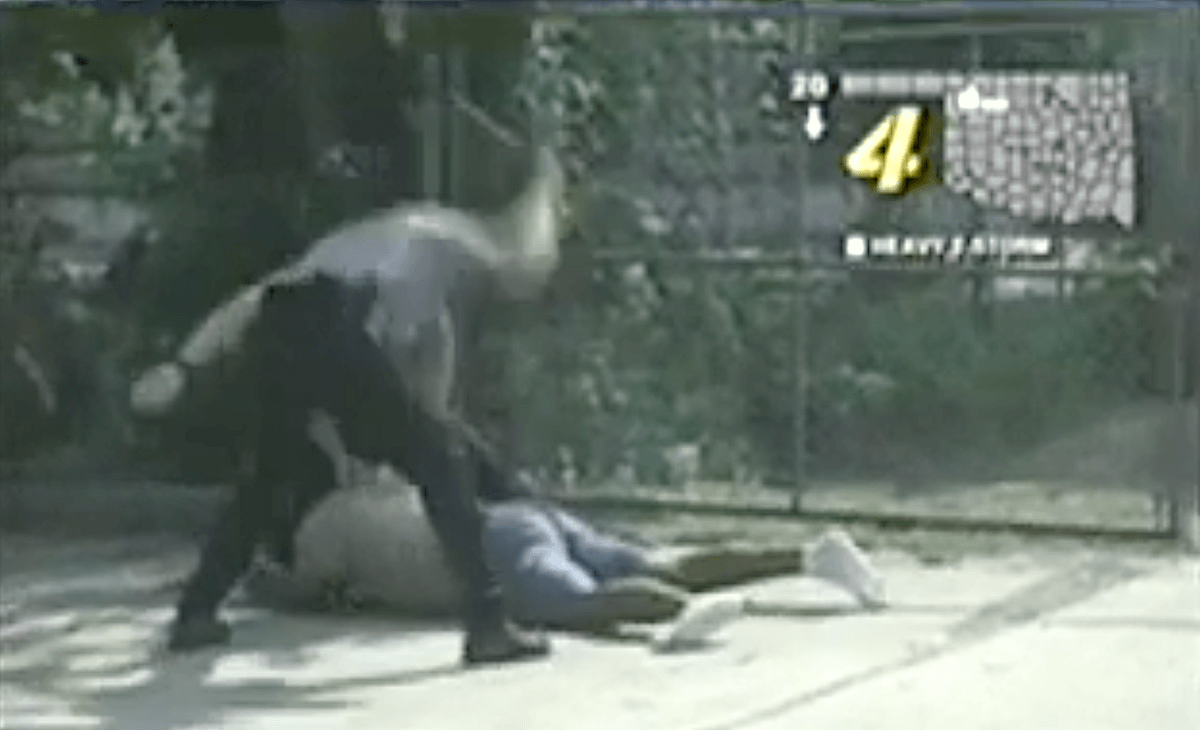
The event that led to the creation of the Citizens Advisory Board occurred in July 2002, when Oklahoma City police officers Greg Driskill and E.J. Dyer were captured on tape beating a black man named Donald Pete during an arrest.
Filmed by self-proclaimed local “video vigilante” Brian Bates, the incident became a national story the same month that police officers Inglewood, California, had been filmed beating a Black teenager. The two videos sparked waves of protest and activism in both cities.
“We had some of the same problems that we had after the death of George Floyd,” recalled Roosevelt Milton, who was the president of Oklahoma City’s NAACP chapter at the time. “And we approached the police department in the way that we knew how about trying to address those problems. And so that’s how we subsequently came up with the idea of the Citizens Advisory Board.”
Although some cities, such as Detroit and Kansas City, have had police oversight organizations in place for about 40 years, such bodies were less common in 2002 than they are now. According to Liana Perez, the director of operations for the nonprofit National Association for Civilian Oversight of Law Enforcement, it’s only been in the past 10 years or so that oversight boards have started to proliferate. But Oklahoma City’s proposal for the board 15 years ago was gleaned from models that existed in other cities at the time.
“[The goal] was to provide some opportunity for the community to really talk about incidents and things that were happening in the community with policing — having some sense that there was someone to talk to. It didn’t just go into a black hole,” recalled Lee Cooper, pastor at Prospect Baptist Church, who was involved in the effort and is also on the current task force. “You could go and make a complaint — any citizen could go and make a complaint with the police department. They say that they investigate. But oftentimes we know it’s just kind of swept under the rug, not taken seriously. And so citizens don’t really have that real trust of communication with the police department.”
Organizers also had hoped that the board would feature some true oversight responsibility. It was originally pitched as a “review board” rather than an “advisory board,” Cooper said.
But, according to Cooper, by the time the negotiations had navigated certain regulatory obstacles in the city charter and opposition from the Fraternal Order of Police and then-Mayor Kirk Humphreys, the board’s operations had been reduced.
“And over 18 years, that has just been watered down to literally nothing,” Cooper said.
According to Milton, the board’s early proponents were hopeful that, once the body was in place, it could grow and evolve into something more robust. But that never panned out.
“It was a very small step,” Milton said. “It had potential to do a lot more good than it did.”
Seeking something other than ‘more of the same’
The National Association for Civilian Oversight of Law Enforcement recently completed an in-depth survey funded by the U.S. Department of Justice’s Office of Community Oriented Policing Services “to provide comprehensive guidance on civilian oversight” and effective practices for such bodies. (The study is scheduled to be published later this year.)
The study found that, although there is no particular model that works best, effective oversight boards share certain attributes, including independence, public transparency and the ability to evaluate long-term patterns within a police department.
According to Perez, what makes these bodies successful often has as much to do with their ability to provide a wide-lensed oversight as it does with their ability to react to particular incidents.
“Very few of them can actually impose discipline, but some of them can make recommendations,” Perez said. “They can actually review discipline patterns to be sure it’s being thoroughly and fairly handled, and they can get patterns of complaints and not just individual complaints. So if you’re seeing a consistent pattern of rudeness or attitude or use of force complaints, it has the ability to look at things that are coming out of the complaints to make it more systemic type recommendations, systemic changes.”
One model that the local chapter of Black Lives Matter hopes to put on the table for Oklahoma City is an independent police monitoring division based on the effort implemented in New Orleans. BLM-OKC chose to advocate for this model partly based on similarities between Oklahoma City and New Orleans, such as size and having what’s known as a weak-mayor system of city governance.
Rather than giving oversight responsibilities to a panel of citizens, the New Orleans model establishes a full-time monitor in an entirely separate office.
This monitor is empowered to complete its own investigations, including analysis of long-term trends. It can recommend to the police superintendent that investigations be reopened, and it is required to issue a public report if the department refuses to follow that recommendation. It is also required to publicly issue an annual report on its own activities and investigations.
Joshua Higginbotham, a member of the Oklahoma City chapter of Black Lives Matter, said the ability to collect and review a wide range of data was an important factor in identifying a model to promote. The group also wanted a model that would move the city toward deeper reforms to policing and criminal justice.
While most Oklahomans would not support prison abolition or defunding the police, having a monitor with real oversight power “doesn’t seem so far fetched,” Higginbotham said.
“The majority will see the benefit, because they can see why it’s stronger,” he said. “And, unlike the Citizens Advisory Board, it isn’t just more of the same.”
‘A long way to go and a short time to get there’
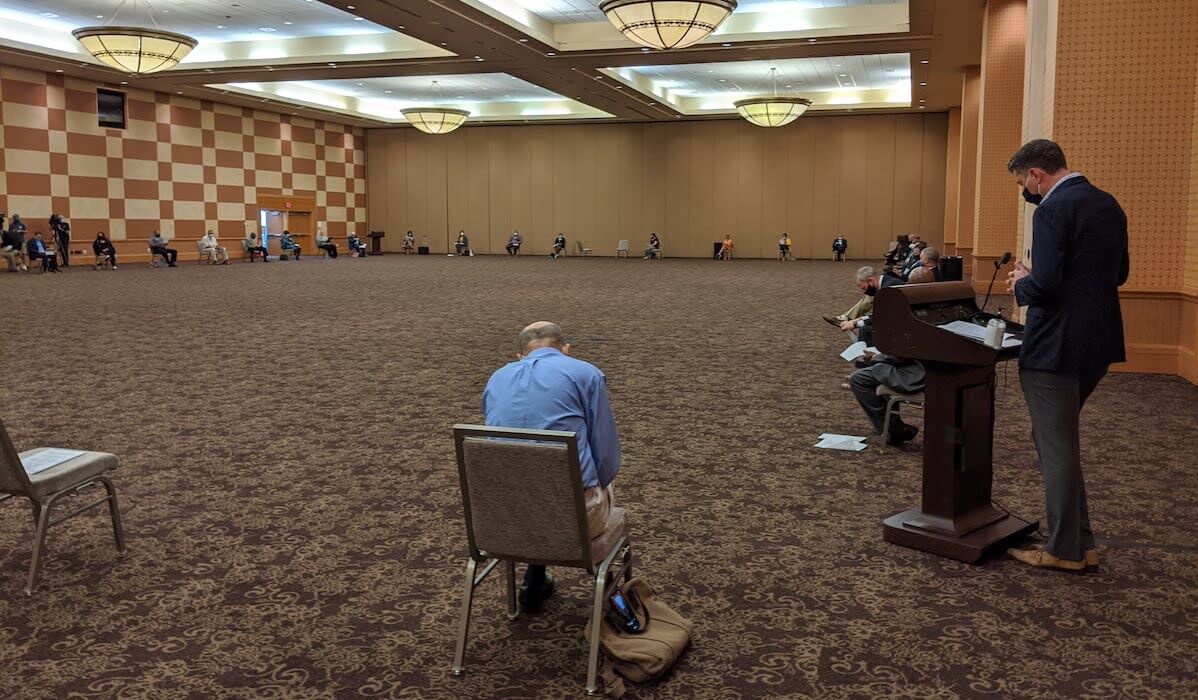
Liana Perez said NACOLE avoids promoting “best practices” and instead talks about “effective practices” because models and methods inevitably vary based on local factors. But effectiveness can also be hard to measure.
“We’re very quick to say that oversight alone is not going to solve all the problems,” Perez said. “It’s not going to stop misconduct. (…) Really, the effectiveness of the model is oftentimes borne out in the community’s reaction to things. When there’s those high-profile incidents, and if the oversight model entity has established themselves as being credible and transparent in the community, then that community is going to rely on the fact that, OK, we have an oversight structure in place that is going to be part of reviewing this incident.”
In Oklahoma City, the mayor’s new Law Enforcement Task Force seems designed to build that broad base of trust. The group’s 45 members have been selected to represent a wide range of the city’s communities, along with local political leaders and law-enforcement representatives like OKCPD Chief Wade Gourley and the president of the OKC Fraternal Order of Police, John George.
Dickerson said she was somewhat wary of police involvement in the task force.
“The Oklahoma City Police Department already basically polices themselves,” she said. “So I don’t know how effective a task force will be when you’re asking them to be subjective and objective about performance.”
On the other hand, Cooper said the involvement of law enforcement — particularly the FOP, which he said was not present for or supportive of the formation of the Citizens Advisory Board in 2002 — made him cautiously optimistic.
“We’re kind of back at the same place where we were 18 years ago. But a couple of things have changed,” Cooper said. “One is that it was encouraging to see a larger, broader coalition that was in the room, particularly the support of the mayor and particularly the representation of the FOP and other policing agencies. And so that in and of itself is encouraging. But we’ve got a long way to go and a short time to get there.”
Milton, however, warned of the danger of falling into old patterns.
“I’ve seen these kind of efforts come and go,” he said. “You have a crisis. You try to meet with the people who are distraught about whatever happened or what is happening, and you come up with a plan. And then you deep-six the plan. (…) You never really implement some of the important parts of it, and really the program goes belly up.”
The first meeting of the Law Enforcement Task Force on Aug. 11 consisted mostly of introductions, but toward the end it featured a discussion in which several people raised various concerns about the hiring of an outside consultant to work with the task force — a matter that precedes the group’s real work getting underway.
The conversation promised to spill over into the next meeting, providing a taste of what is likely to be a long road ahead. The one thing that seemed immediately clear is that there won’t be any easy fixes.
In his opening remarks, Holt spoke of “a never-ending search for balance.”
“How do we simultaneously protect our community, our officers and our residents who engage with our officers? When it comes to law enforcement, this really has been the question of our time,” Holt said. “And it is likely not one that will ever fully be resolved. It is one we as a community have continued to revisit. We’re here today because we can do better.”

